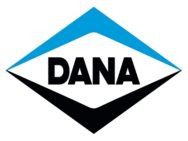The clutch is an essential mechanical device that acts as a link in systems that require the selective transmission of rotational motion from one component to another. This type of mechanism is most commonly found in motor vehicles where they act as the linkage between the transmission and the engine.
While automotive clutches are certainly the most known, they are not the only type of clutch used for specific purposes. Industrial clutches are quite common for industrial applications, serving the fundamental purpose of connecting and disconnecting power transmission for the transfer of rotational force.
However, in many ways, industrial clutches are different from their automotive counterparts, such as in their robust construction and ability to handle massive torque loads. Learn more about industrial clutches as we answer the questions “What is an industrial clutch?” and “How does an industrial clutch work?” below.
What is an Industrial Clutch?
An industrial clutch is a type of clutch used in various industrial applications, such as operating heavy machinery and facilitating the efficient transfer of power. Through their different functionalities, industrial clutches allow the machine or equipment to enjoy smoother start-ups, efficient speed changes, overload protection and synchronization with other machinery components.
The main difference between an industrial clutch and other clutch types is their design specifications. Generally, industrial clutches are designed to handle high torque loads, frequent engagements and demanding operating conditions within industrial settings. Given their intended application, they often feature robust construction using high-quality materials and come with advanced design features that enable them to withstand the harsh performance requirements of heavy machinery.
How Does An Industrial Clutch Work?
Industrial clutches typically consist of different industrial clutch parts, including the flywheel, pressure plate, clutch disc, clutch release bearing, clutch fork and actuation mechanisms. Within the mechanism itself, the flywheel directly connects to the drive shaft while the pressure plate and clutch disc are located between the flywheel and the driven shaft.
Within these mechanisms, one member is attached to the power unit (typically the engine), which then drives the other member to provide output power. In this case, when the clutch is engaged, the clutch disc presses against the flywheel and pressure plate to facilitate the transfer of power. Meanwhile, when the clutch is disengaged, it separates the entire mechanism from the flywheel and pressure plate to interrupt the transmission of power.
What are the Different Types of Industrial Clutches?
There are several types of industrial clutches, including the following:
- Friction Clutch: The most common type; they consist of friction discs and pressure plates that push the discs together and allow the transmission of torque.
- Electromagnetic Clutch: Uses magnetic forces to engage and disengage the clutch.
- Hydraulic Clutches: Engages and disengages the clutch through the action of hydraulic pressure.
- Pneumatic Clutches: Compressed air generates the needed pressure to engage and disengage the clutch.
- Centrifugal Clutches: This type of industrial clutch operates based on centrifugal force.
- Dog Clutches: Made up of teeth on both driving and driven components that mesh together when the clutch is engaged.
- Cone Clutches: As the name suggests, this type of industrial clutch has a conical shape, which allows for gradual engagement and disengagement.
- Tooth Clutches: Similar to dog clutches, tooth clutches have teeth on both driving and driven components, offering more precise timing and control.
Maintain Operational Efficiency with K&L Clutch
The industrial clutch performs a crucial role in allowing the seamless transfer of rotational force from one component to another within an equipment’s mechanism. Because of these integral functions, your machine’s industrial clutch must be maintained in excellent condition to ensure operational efficiency.
K&L Clutch is your partner in securing replacement parts for your machines. We supply industrial clutches and other mechanical components to keep your machines running and prevent significant operational downtime. We supply parts manufactured by some of the industry’s most notable brands and provide repair and installation services for all the parts we sell. For more assistance, or to learn more information, you are welcome to contact us here.

























